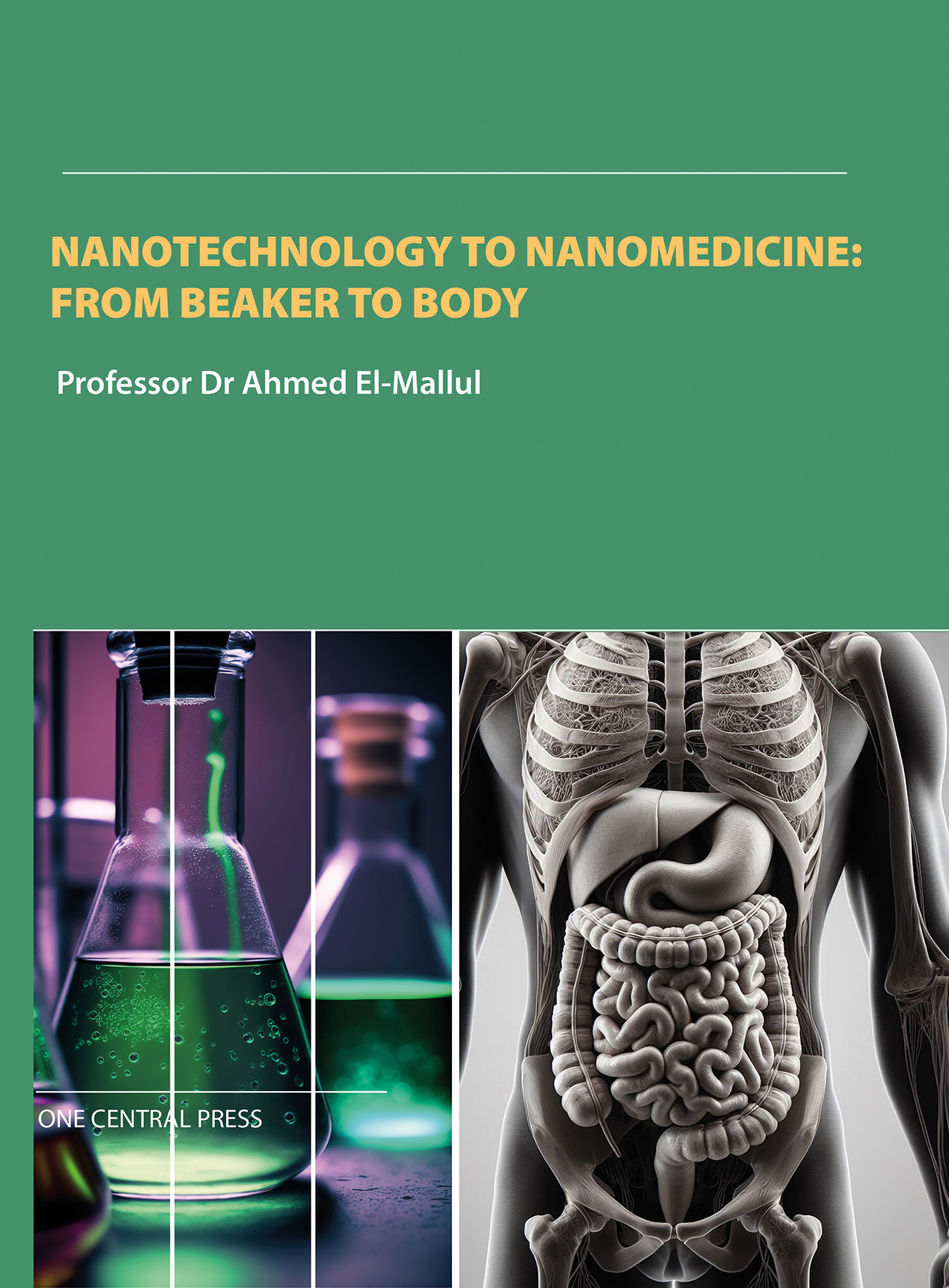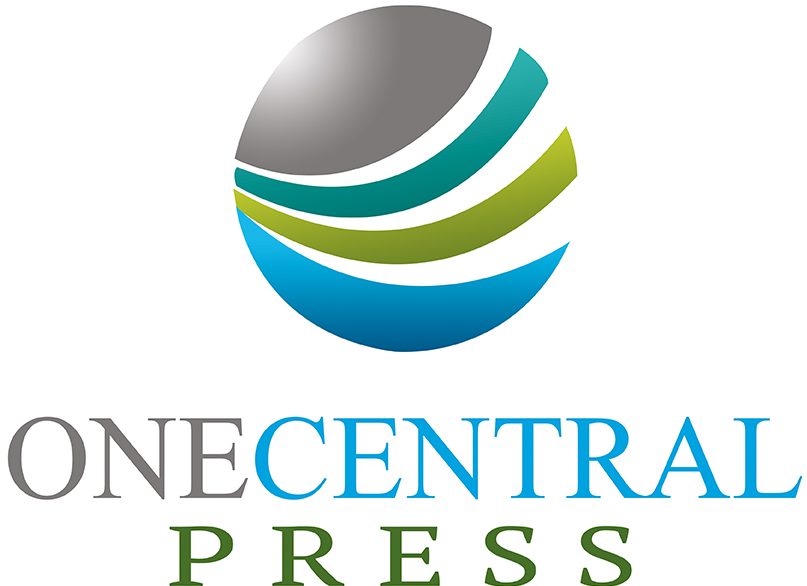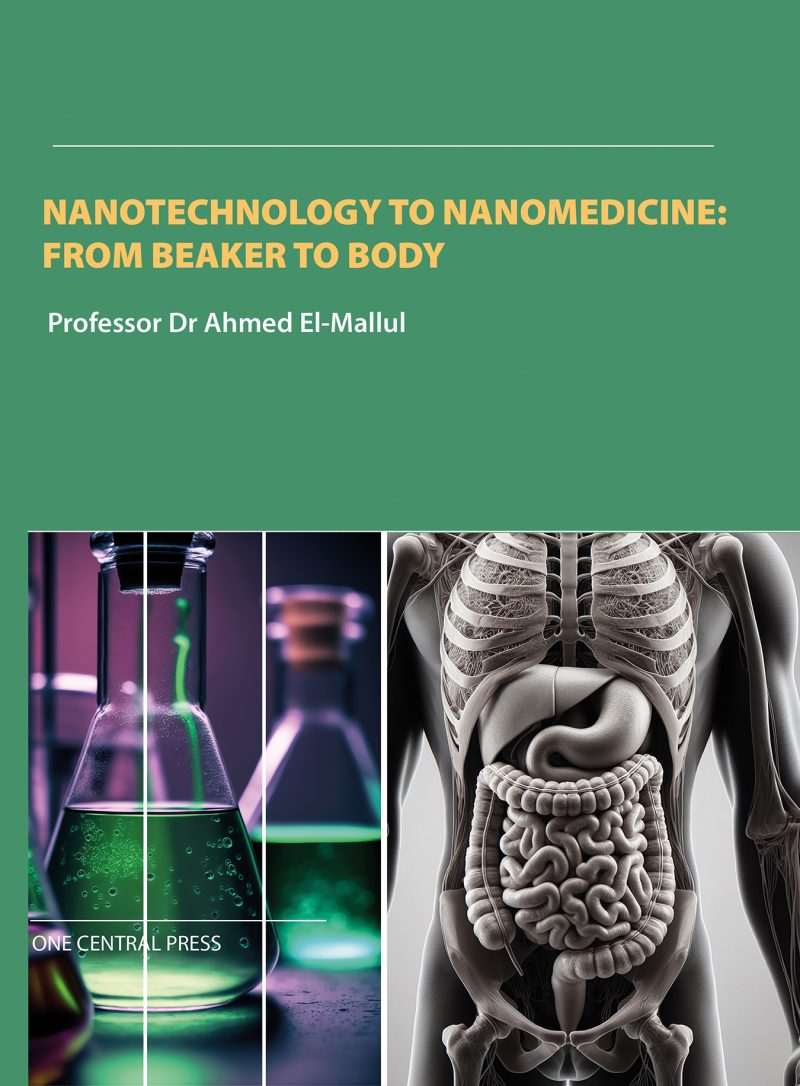
Nanotechnology to Nanomedicine: From Beaker to Body
Editor(s): Professor Dr Ahmed El-Mallul Publisher: One Central Press ISBN (eBook): 9781910086964 Language: EnglishTHE TOPICS COVERED IN THE EDITED BOOK INCLUDE, BUT ARE NOT LIMITED TO:
As diseases evolve and become more resistant to existing medications over time, the development of stronger and more effective pharmaceuticals has become a necessity. In response to the escalating threat of these resilient diseases, newer generations of medications have been introduced. While these advancements have proven effective in combating diseases, they have also led to an increase in the prescribed dosages and sparked significant discussions regarding their potential systemic toxicities and long-term side effects.
In the realm of innovative treatments, nanomedicines have emerged as a promising alternative. These medicines utilize nanoscale materials, which require lower doses, making them particularly appealing. This book delves into the comprehensive history and application of nanomedicines, beginning with the synthesis of nanomaterials and extending to their utilization as therapeutic agents. Despite the steady increase in research publications that highlight the advantages and applications of nanomaterials in medicine, we provide an in-depth analysis of how these materials can effectively induce the death of pathogenic cells. Nanomaterials typically exert their effects either through oxidative stress or by damaging the DNA/RNA of pathogens, which raises important questions about their safety when it comes to normal blood cells.
Chapter 3 focuses on the various types of nanomaterials that have been explored for biomedical applications. By Chapter 5, the discussion shifts to methods of making nanomaterials target-specific, ensuring they concentrate their effects on diseased cells alone. Surface functionalization is the most prevalent technique used for this purpose. Each type of disease emits specific biomarkers, which can be targeted by functionalizing nanomaterials with antibodies that are specific to those biomarkers. This chapter provides a thorough literature review on how surface functionalization has been successfully used to target specific cancer cells while sparing healthy blood cells.
Despite the precision with which nanomaterials can be designed to target specific cells, their behavior within the human body can still be unpredictable. Chapter 6 outlines the limitations in using nanomaterials as nanomedicines, which may include their accumulation in certain body organs. This accumulation could potentially lead to various toxic effects, extensively discussed in Chapter 7.
Finally, Chapter 8 explores the past, present, and future of nanomaterials in the medical industry. It discusses the rising use of nanomaterials and anticipates future trends and developments in this field.
By analyzing both historical context and current advancements, this chapter provides insights into the potential long-term impact and evolution of nanomaterials in healthcare.
DOWNLOAD BOOK:
BOOK CONTENTS:
Preface for ‘Nanotechnology to Nanomedicine: From Beaker to Body’ book
Preface for 'Nanotechnology to Nanomedicine: From Beaker to Body' bookClick to Read & Download...Chapter 01 – Nanotechnology and Nanomedicine: An Introduction and History
Author(s): Dilawar Hassan, Ayesha Sani, Ahmed El MallulClick to Read & Download...Chapter 02 – Characterization Techniques for Nanoparticles
Author(s): Dilawar Hassan and Ahmed El-mallulClick to Read & Download...Chapter 03 – Nanoparticles as Nanomedicines: Types of Nanoparticles for Biomedical Applications
Author(s): Ahmed El-Malul and Sadia MughalClick to Read & Download...Chapter 04 – Mechanism of Nanoparticle, Killing a Cell
Author(s): Ahmed El-Malul, Sadia Mughal and Ayesha SaniClick to Read & Download...Chapters 05 – Targeted Drug delivery of nanomedicines
Author(s): Ahmed El-Mallul, Ayesha Sani, Dilawar Hassan and Sadia MughalClick to Read & Download...Chapter 06 – Limitations for Nanomedicines
Author(s): Ahmed El-Mallul, Affifa Mughal and Ayesha SaniClick to Read & Download...Chapter 07 – Nanotoxicity – Biological and Environmental Toxicity
Author(s): Ayesha Sani, Ryszard Tomasiuk, Sadia Mughal, Affifa Mughal and Sayed Mubashir ShahClick to Read & Download...Chapter 08 – Past, Present, and Future of Nanomedicine
Author(s): Ahmed El-Mallul, Dilawar Hassan and Ryszard TomasiukClick to Read & Download...
Book Editor Profile

-
Faculty of Medical and health Sciences, Radom University, Radom-Poland
Medical Department, University of Al Zintan, Al Zintan, Libya
Latest Books Edited
Back

